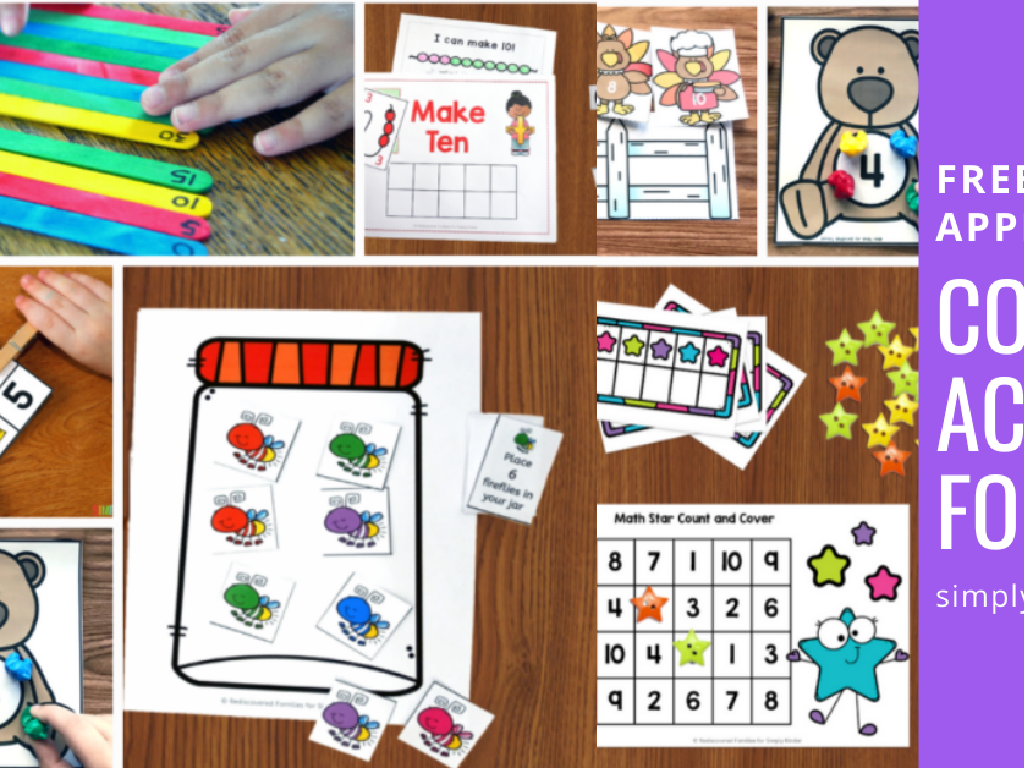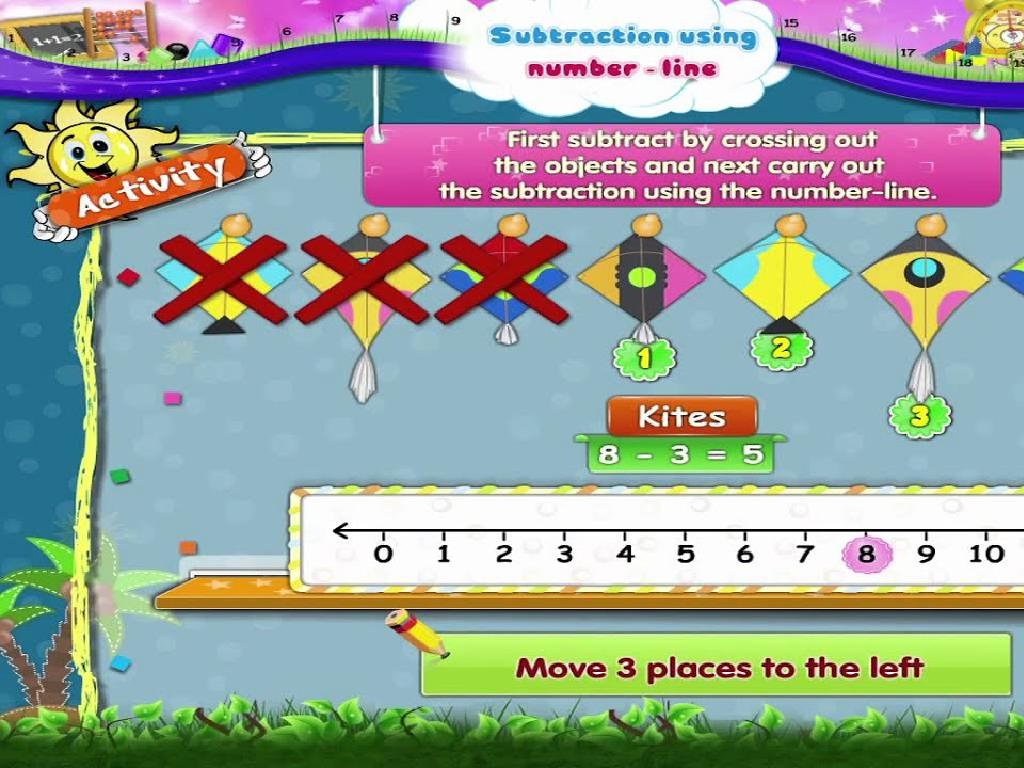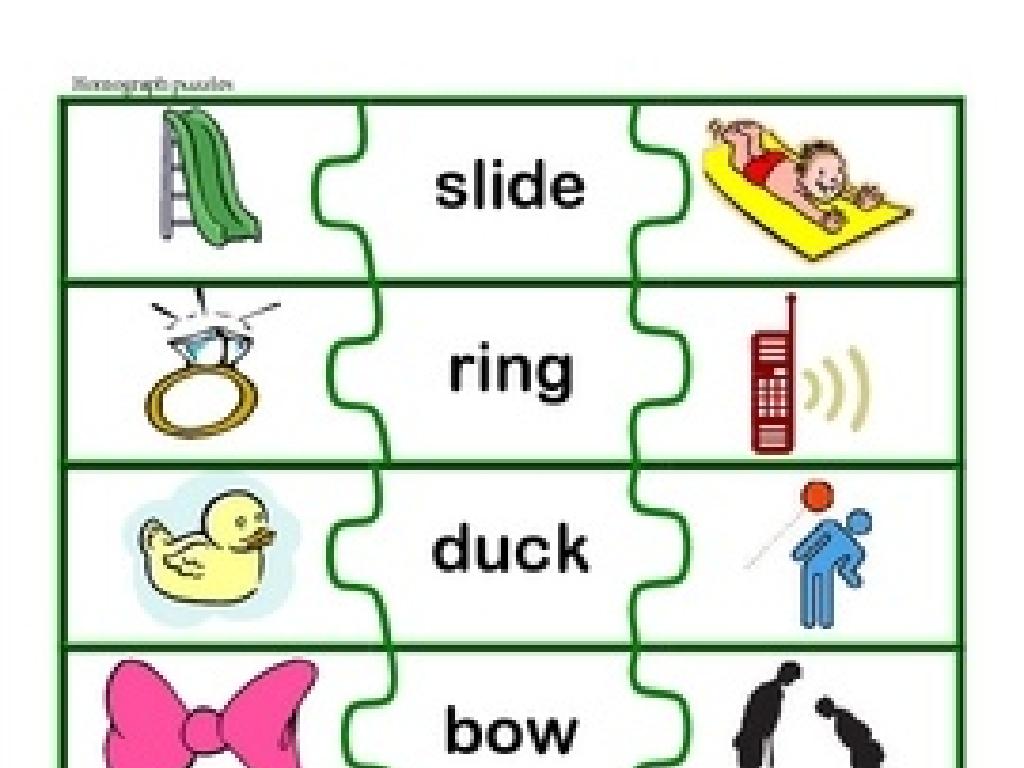Pick The Soft G Or Soft C Word That Matches The Picture
Subject: Language arts
Grade: Second grade
Topic: Soft G And C
Please LOG IN to download the presentation. Access is available to registered users only.
View More Content
The Sounds of Soft G and C
– Learn about Soft G and C sounds
– Examples of soft G and C words
– ‘g’ in giraffe, ‘c’ in cereal
– Importance of Soft G and C in reading
– Recognizing these sounds helps with reading fluency
– Practice spelling with Soft G and C
– We’ll spell words together using these sounds
|
Introduce the concept of soft G and C to the students, explaining that these letters can make different sounds depending on the word. Engage the class by asking for examples of words with soft G, like ‘giraffe’, and soft C, like ‘cereal’. Emphasize the importance of understanding these sounds for improving reading and spelling skills. Plan interactive spelling activities where students practice using soft G and C in words, reinforcing their learning through repetition and participation.
Understanding Soft G
– Soft G sounds like ‘j’
– Think of ‘g’ in ‘giraffe’, not ‘g’ in ‘goat’
– Appears before ‘e’, ‘i’, or ‘y’
– ‘g’ is soft in ‘gem’, ‘gym’, and ‘ginger’
– Examples: ‘giraffe’, ‘giant’
– Other words: ‘gentle’, ‘gypsy’, ‘magic’
– Practice: Listen and repeat
|
Introduce the concept of Soft G to the students by explaining that it is the ‘g’ sound that is similar to the sound of ‘j’. Highlight that Soft G is used when ‘g’ comes before the letters ‘e’, ‘i’, or ‘y’. Provide clear examples like ‘giraffe’ and ‘giant’ and encourage the students to listen carefully as you pronounce these words, then have them repeat the words to practice the soft G sound. This will help them recognize and pronounce Soft G correctly in different words. Make sure to correct their pronunciation gently and provide positive feedback to encourage their learning.
Understanding Soft C
– Soft C sounds like ‘s’
– Like ‘s’ in ‘circle’, not like ‘k’ in ‘cat’
– Appears before ‘e’, ‘i’, or ‘y’
– ‘ce’ as in ‘face’, ‘ci’ as in ‘city’, ‘cy’ as in ‘fancy’
– Examples: ‘circle’, ‘city’
– More examples: ‘cinder’, ‘cereal’, ‘cycle’
– Practice saying Soft C words
|
This slide introduces the concept of Soft C to second graders. Begin by explaining that Soft C has a sound similar to ‘s’ and is found in words where the letter ‘c’ comes before either ‘e’, ‘i’, or ‘y’. Provide clear examples like ‘circle’ and ‘city’ and pronounce them with the class to reinforce the sound. Encourage the students to repeat after you to practice the pronunciation. You can also use visual aids like pictures of the words mentioned to help students associate the sound with the words. As an activity, you could have students find objects in the classroom that have the Soft C sound or draw pictures of such items as a fun way to remember the concept.
Matching Game: Soft G Sounds
– Observe the pictures displayed
– Find words with the soft G sound
– Words like ‘giraffe’, ‘giant’, or ‘gem’
– Match words to the correct picture
– Use clues from the image to choose the right word
– Let’s learn and match together!
|
This slide is for an interactive class activity focused on identifying the soft G sound in words. Display various pictures that represent words with the soft G sound, such as ‘giraffe’, ‘giant’, ‘gem’, etc. Encourage the students to carefully look at each picture and think about the word that represents the image. Guide them to say the words out loud and listen for the soft G sound, which is similar to a ‘j’ sound. Once they find the word, they should match it to the picture. This activity will help reinforce their understanding of the soft G sound and its usage in words. Make sure to provide positive feedback and support as they make their matches. For students who may struggle, offer additional clues or break down the words into smaller sounds.
Matching Game: Soft C Words
– Learn about soft C sounds
– Soft C sounds like ‘s’ as in ‘city’
– Match words with pictures
– Look at the picture, think of a word with soft C that describes it
– Class participation activity
– Enhance vocabulary skills
|
This slide is for a class activity focused on the soft C sound, which typically sounds like ‘s’ when followed by the letters ‘e’, ‘i’, or ‘y’. Display pictures and guide the class to think of words that match the images and contain the soft C sound. Encourage students to participate by raising their hands to suggest words. This activity helps students associate the sound with the letter and enhances their vocabulary. For example, if the picture is of a bicycle, the word ‘cycle’ has a soft C. Prepare a list of pictures and possible words in advance to ensure a smooth activity flow. Remember to praise correct answers and gently correct any mistakes, reinforcing the correct pronunciation and usage of soft C words.
Practice Time: Soft G and C Words
– Review soft G and C sounds
– Receive a worksheet with pictures
– Pictures will have associated words
– Circle the right soft G or C word
– Look for the soft G or C sound in words
– Share your answers with the class
|
This activity is designed to reinforce the students’ understanding of soft G and C sounds in words. Hand out worksheets that include a variety of pictures and a list of words with both soft G and C sounds. Instruct the students to carefully look at each picture and circle the word that correctly matches the picture using the soft G or C sound they’ve learned. After completing the worksheet, encourage students to share their answers with the class to promote discussion and peer learning. This will help solidify their grasp of the concept through practice and collaborative learning.
Class Activity: Craft Your Soft G and C Book
– Create a Soft G and C book
– Draw and write a soft G or C sentence
– Illustrate a picture, then use a soft G or C word in a sentence about it.
– Share your favorite page
– Choose the page you loved making the most to show your friends.
– Enjoy learning with creativity
|
This activity is designed to reinforce the concept of soft G and C sounds through a creative project. Students will create their own book where each page includes a drawing and a sentence using a word with a soft G or C. Encourage them to think of words like ‘giraffe’ for soft G or ‘cereal’ for soft C. This hands-on activity not only helps in understanding the sounds but also in practicing writing and artistic skills. After completion, students will share their favorite page with the class, fostering public speaking and pride in their work. Possible variations of the activity could include working in pairs, creating a class book, or even making a digital version using a drawing app.
Great Work on Soft G and C!
– Congratulations on learning soft G and C!
– Practice reading with your book at home
– Find words with soft G and C and read them aloud
– Exciting new sounds await in our next lesson!
– Keep up the good work and stay curious
– Your hard work will make you a great reader!
|
This slide is a conclusion to reinforce the students’ understanding of soft G and C sounds. It serves as positive reinforcement for their efforts in class and encourages them to continue practicing at home with their books. The anticipation of learning more fun sounds is meant to keep them engaged and looking forward to future lessons. As a teacher, you can remind them of the importance of practice in mastering reading skills. Celebrate their progress so far and motivate them to keep exploring and enjoying Language Arts.






